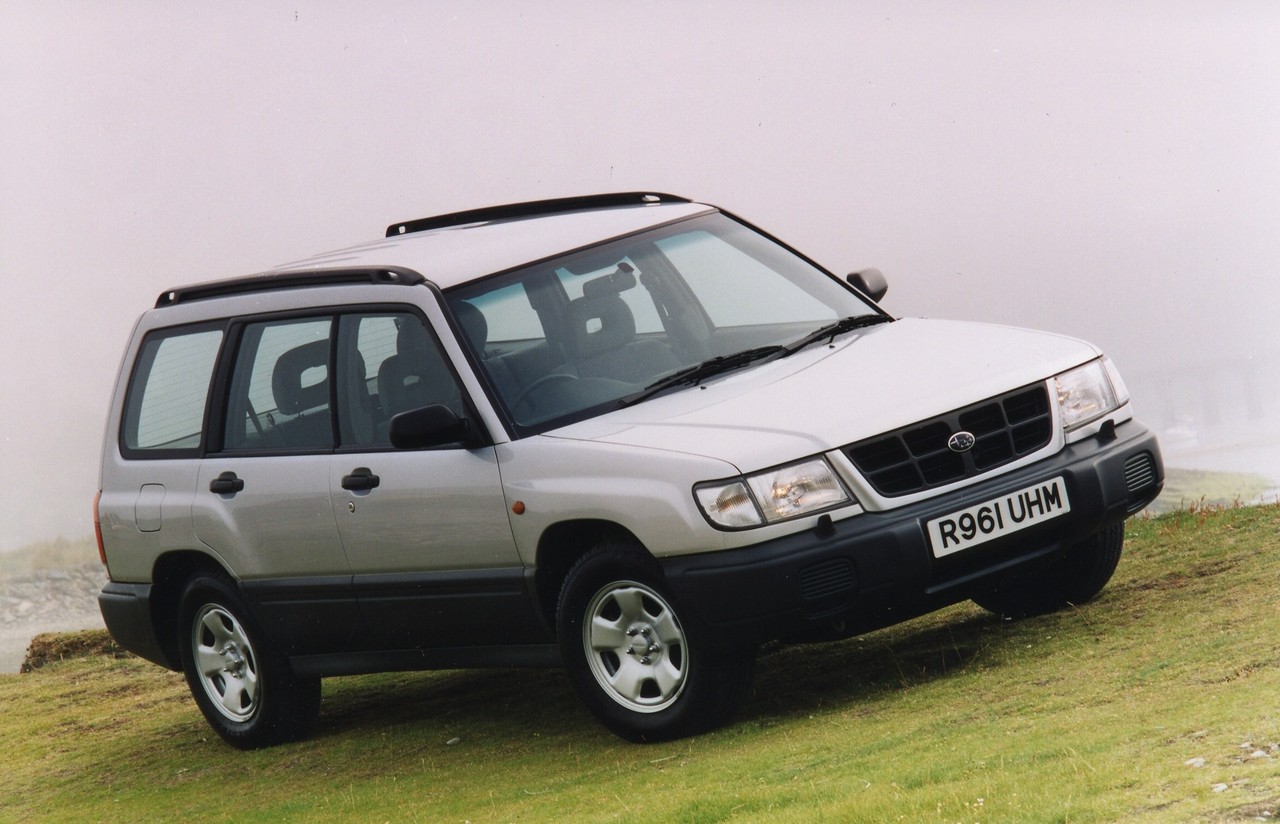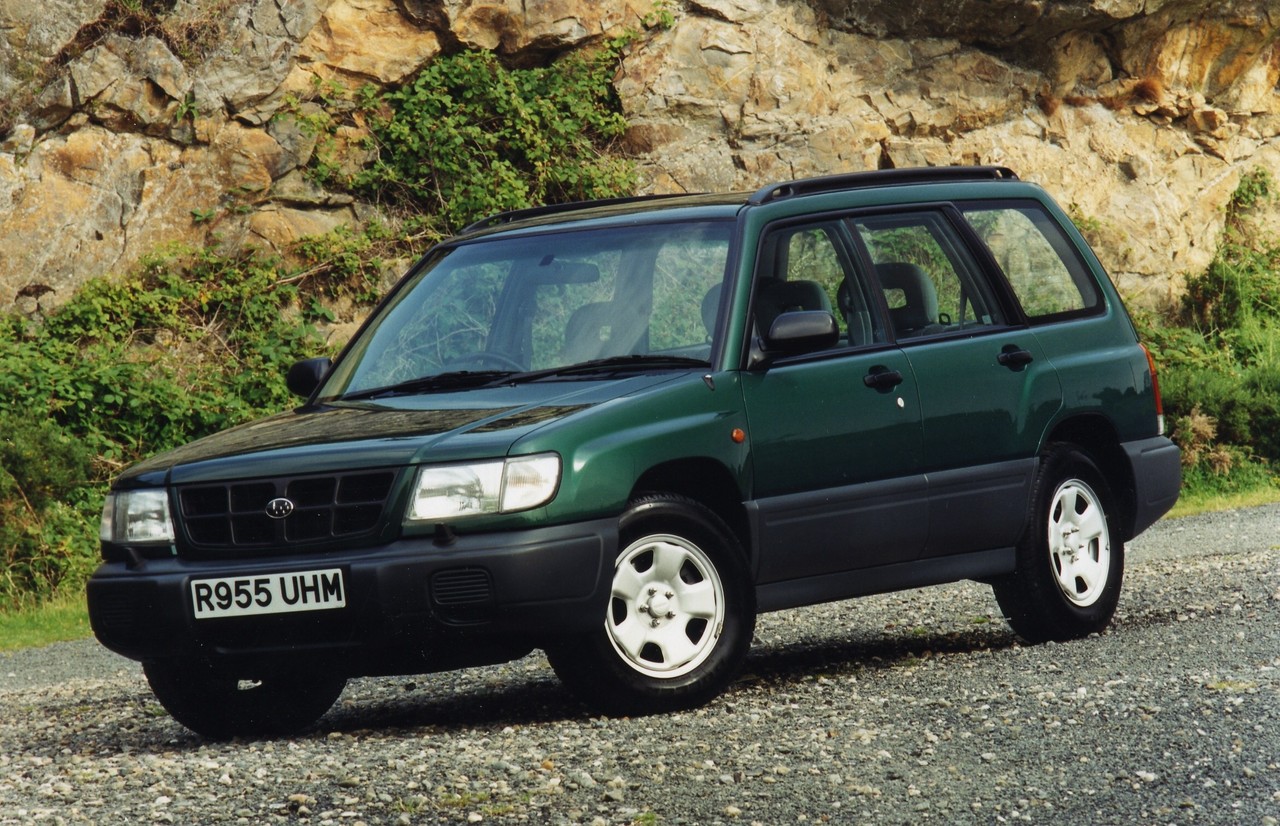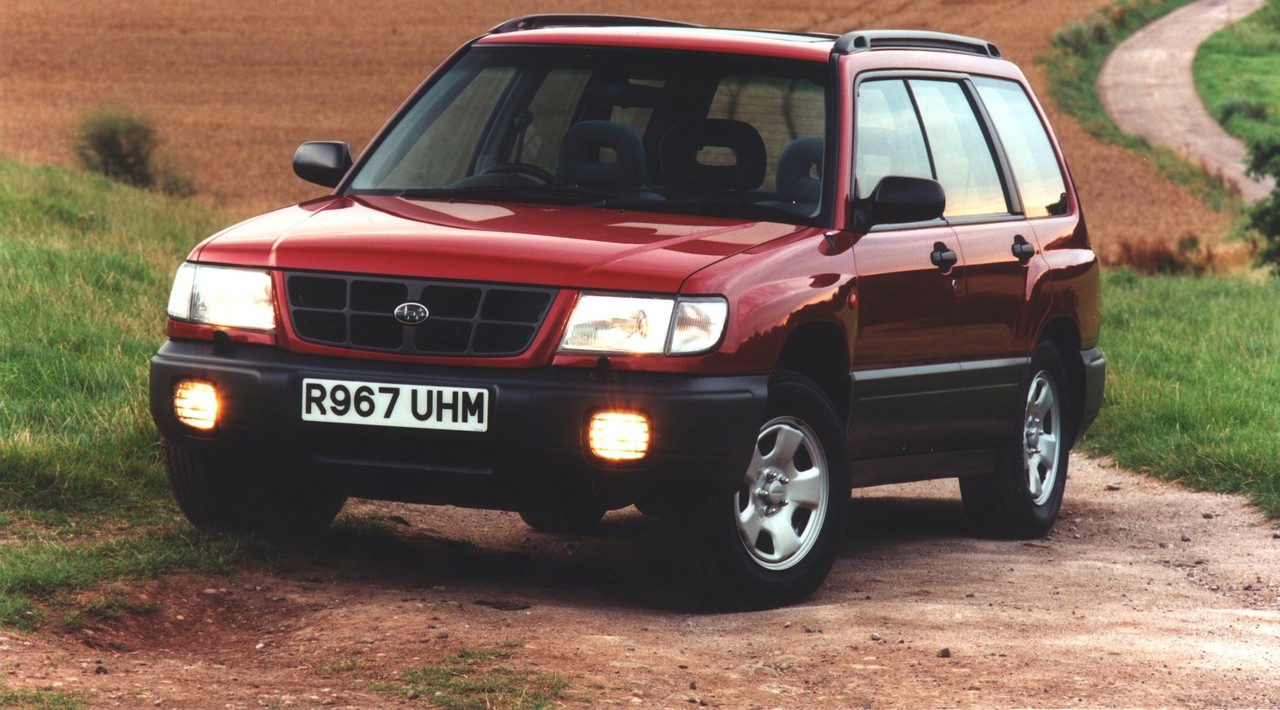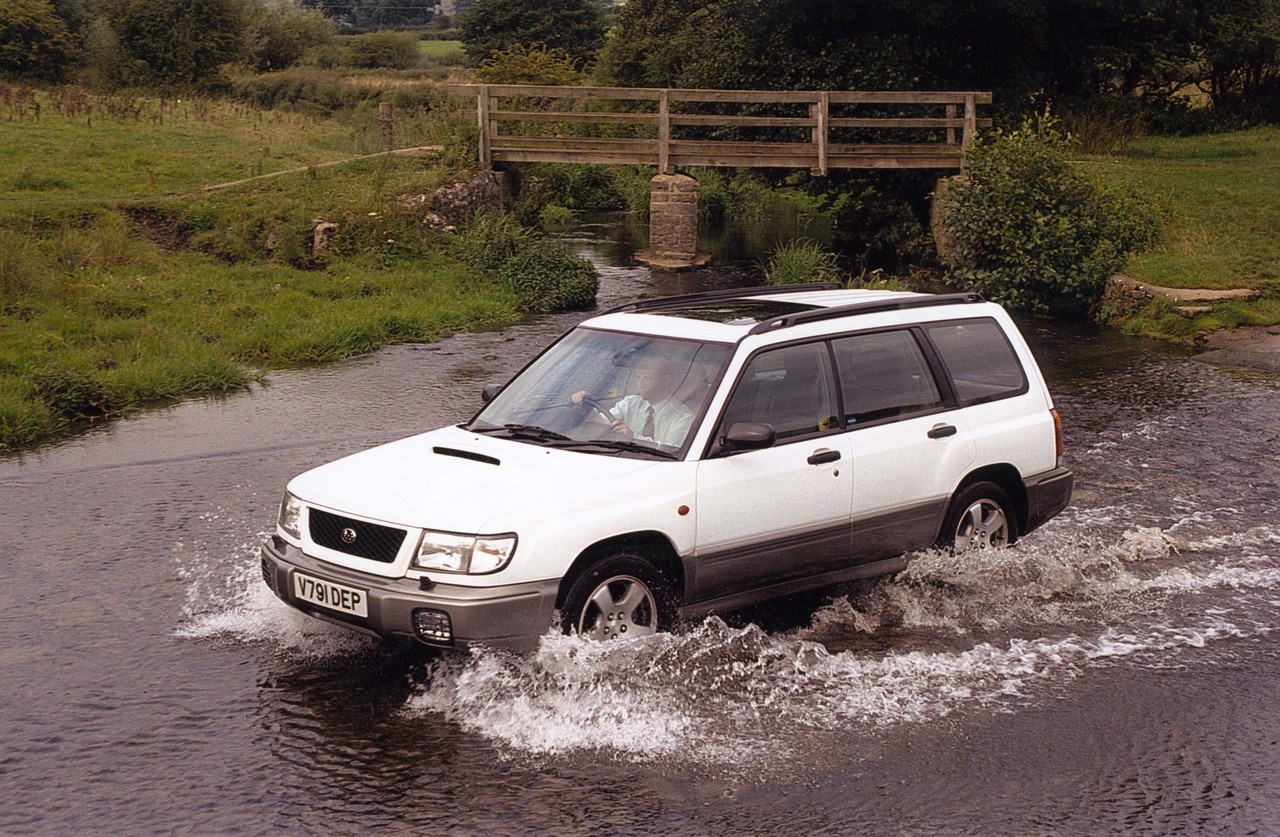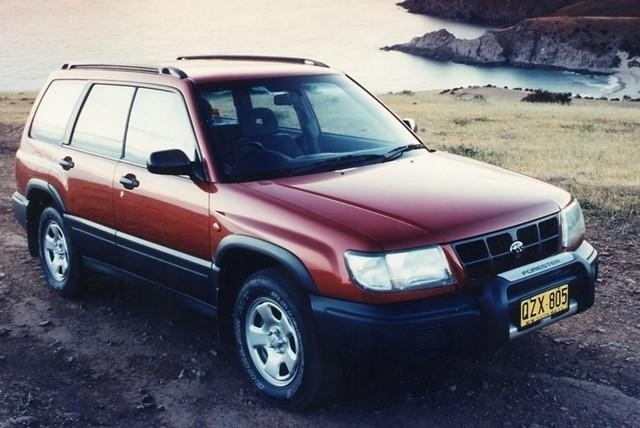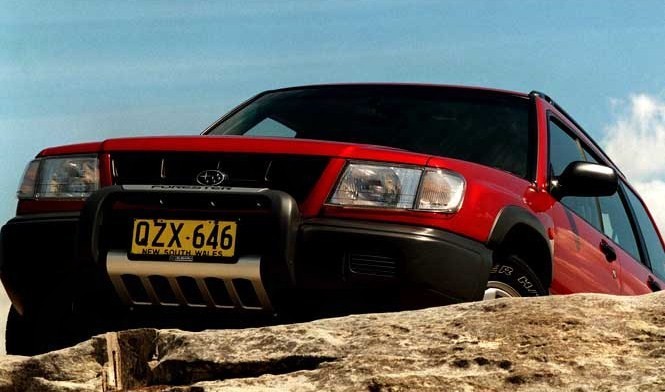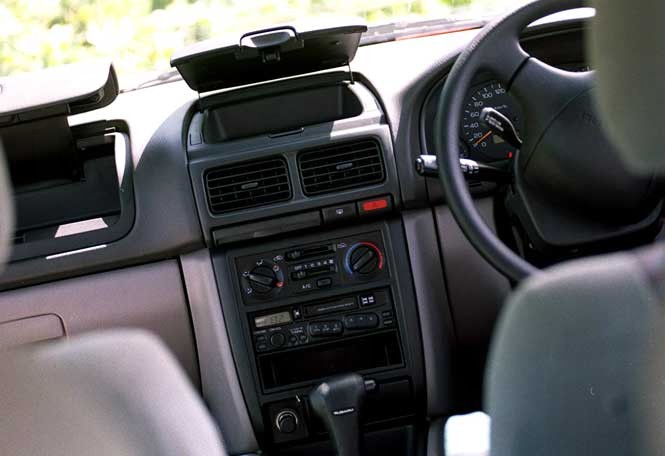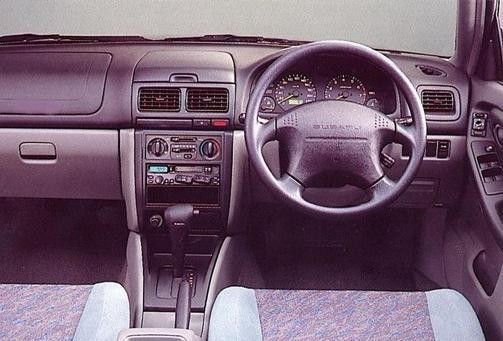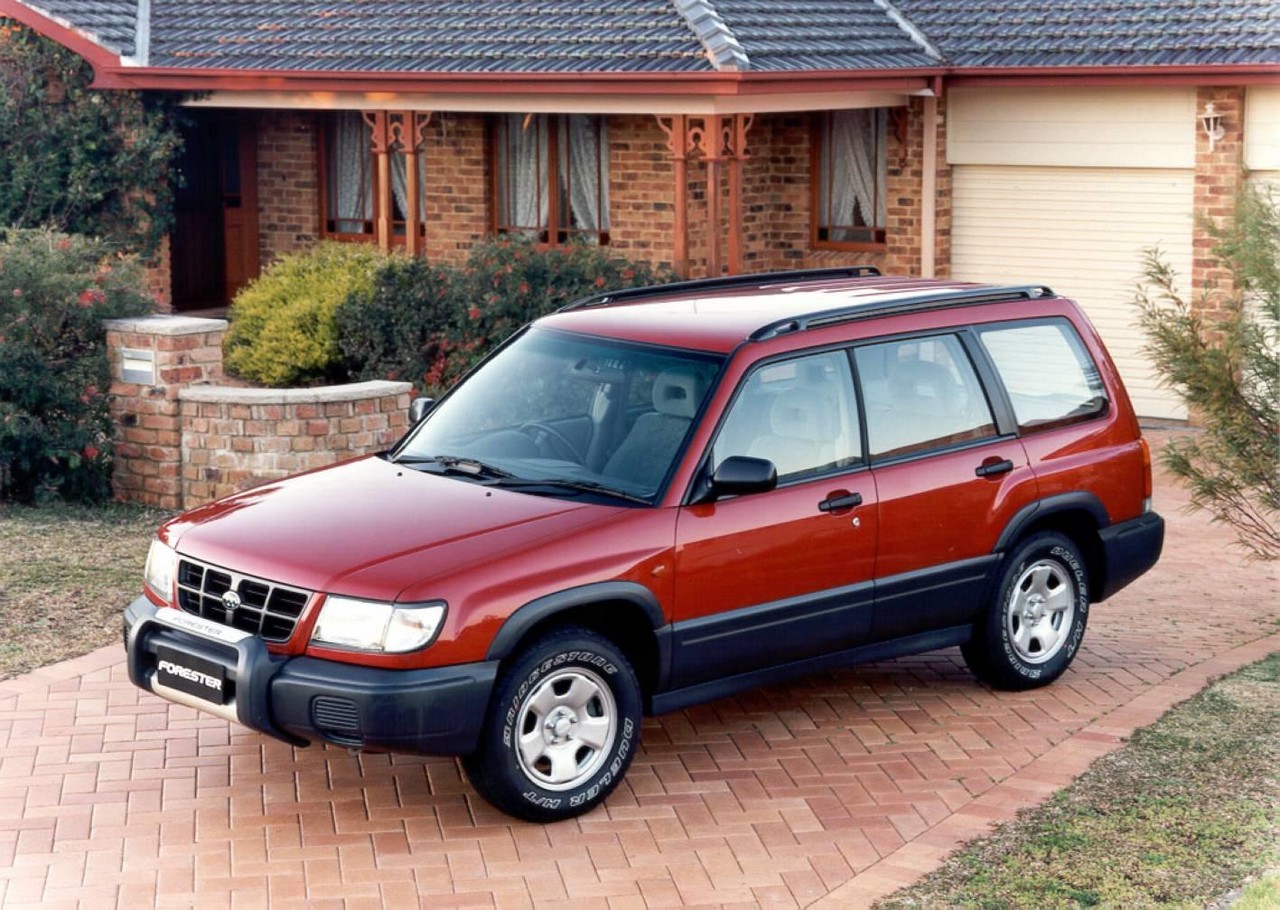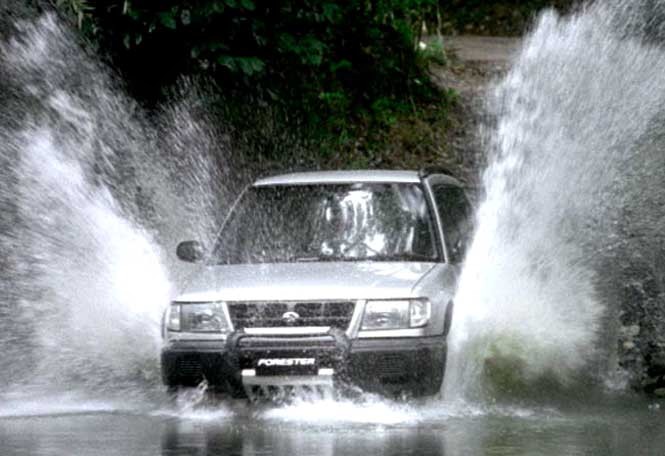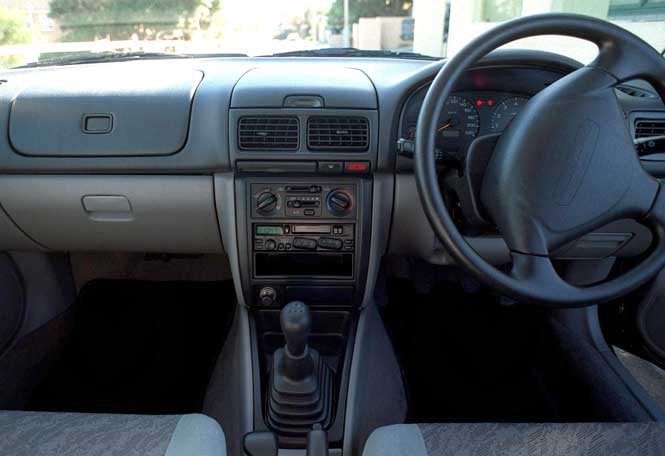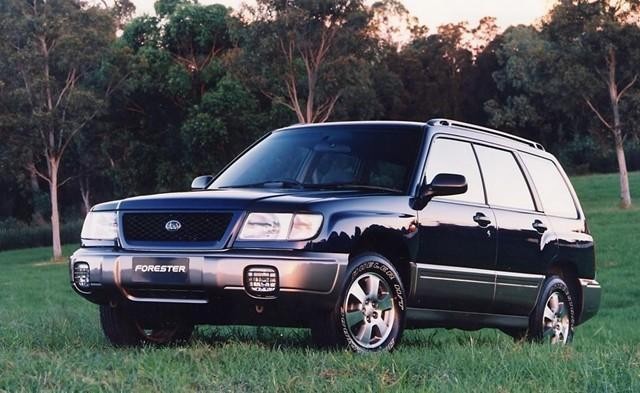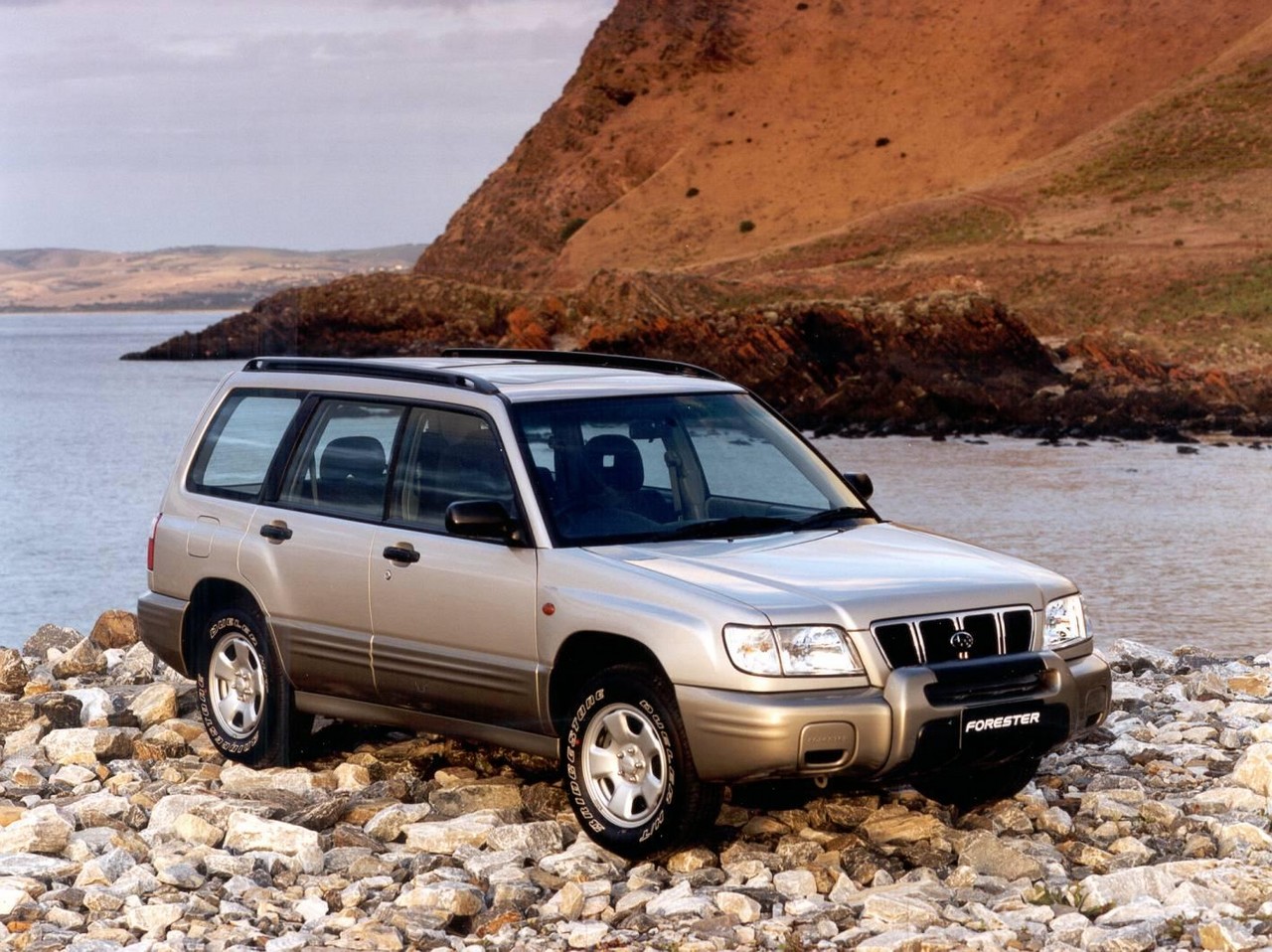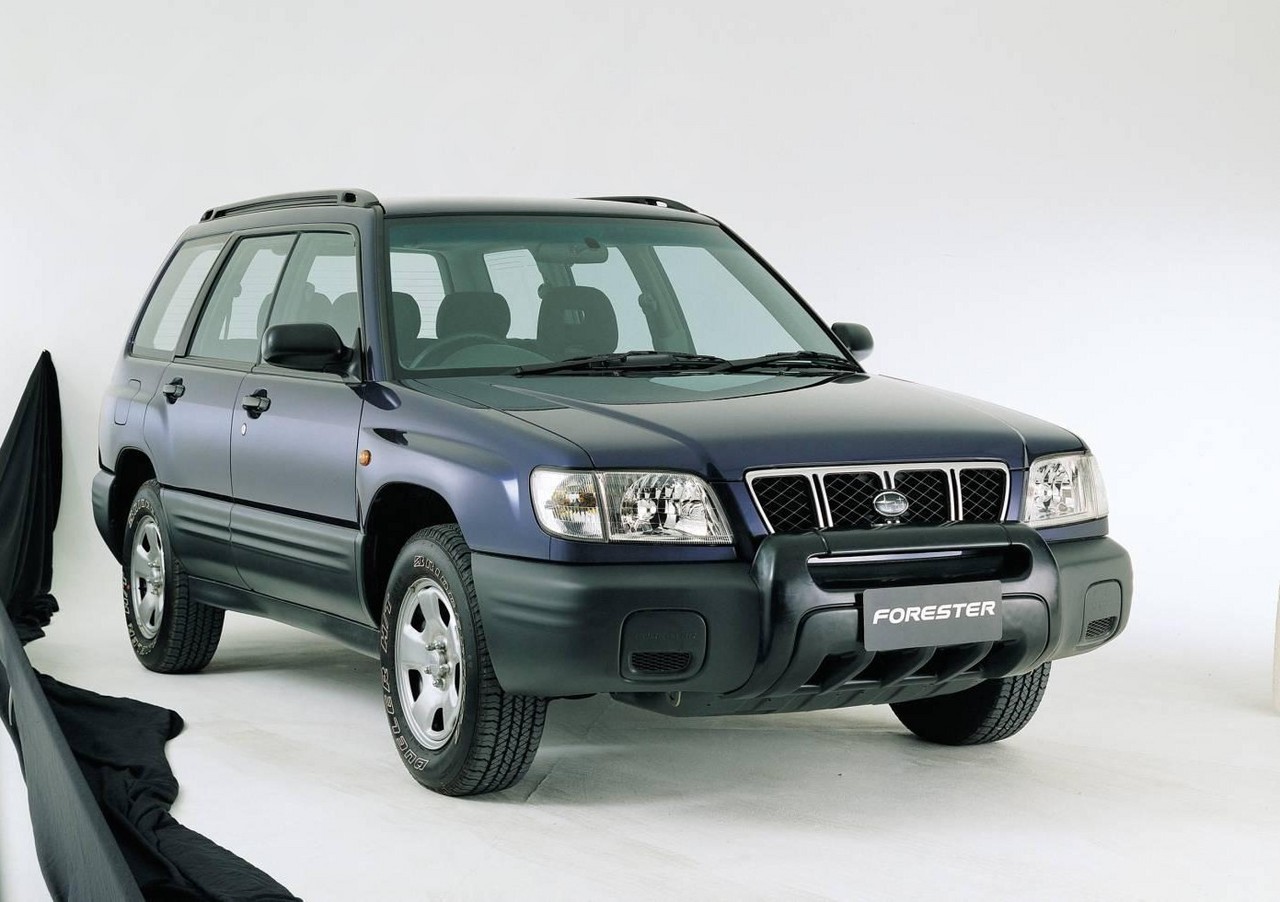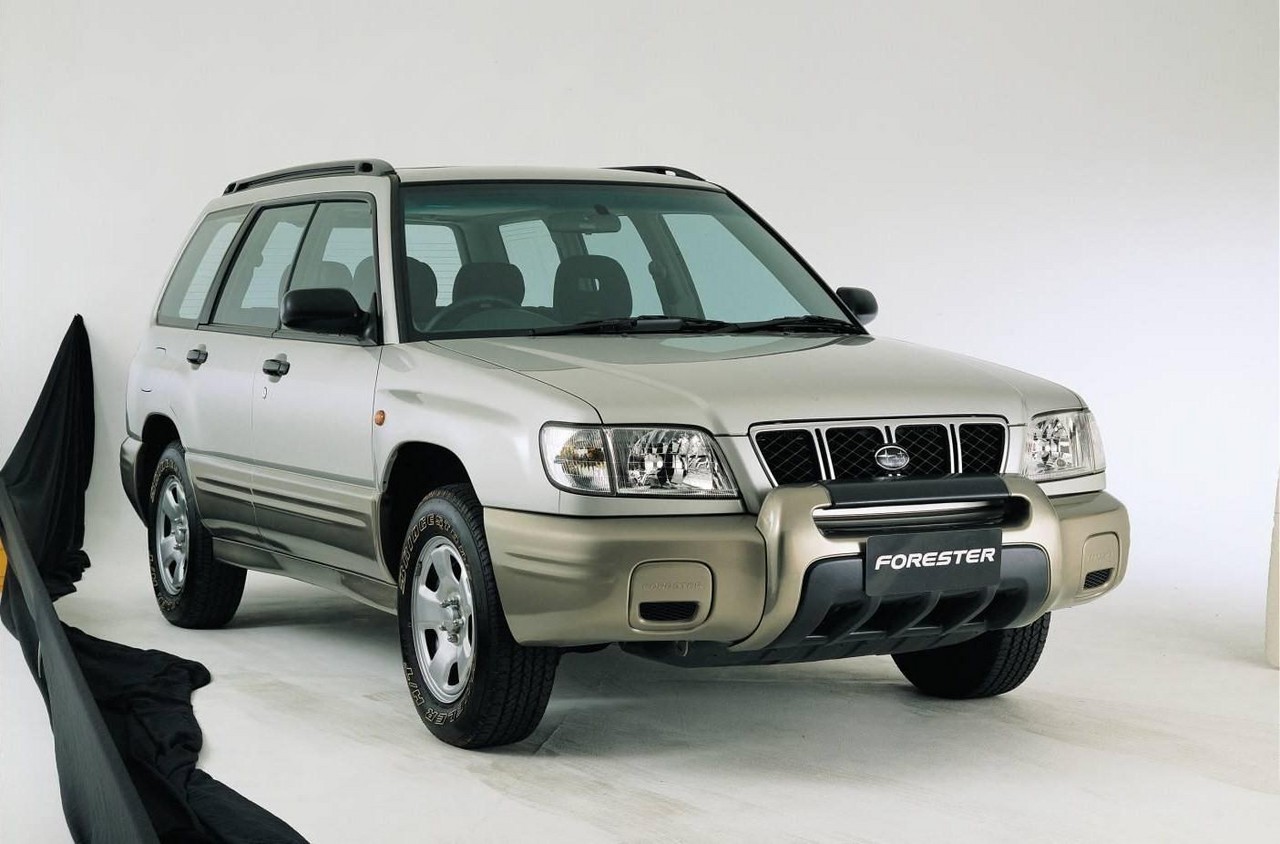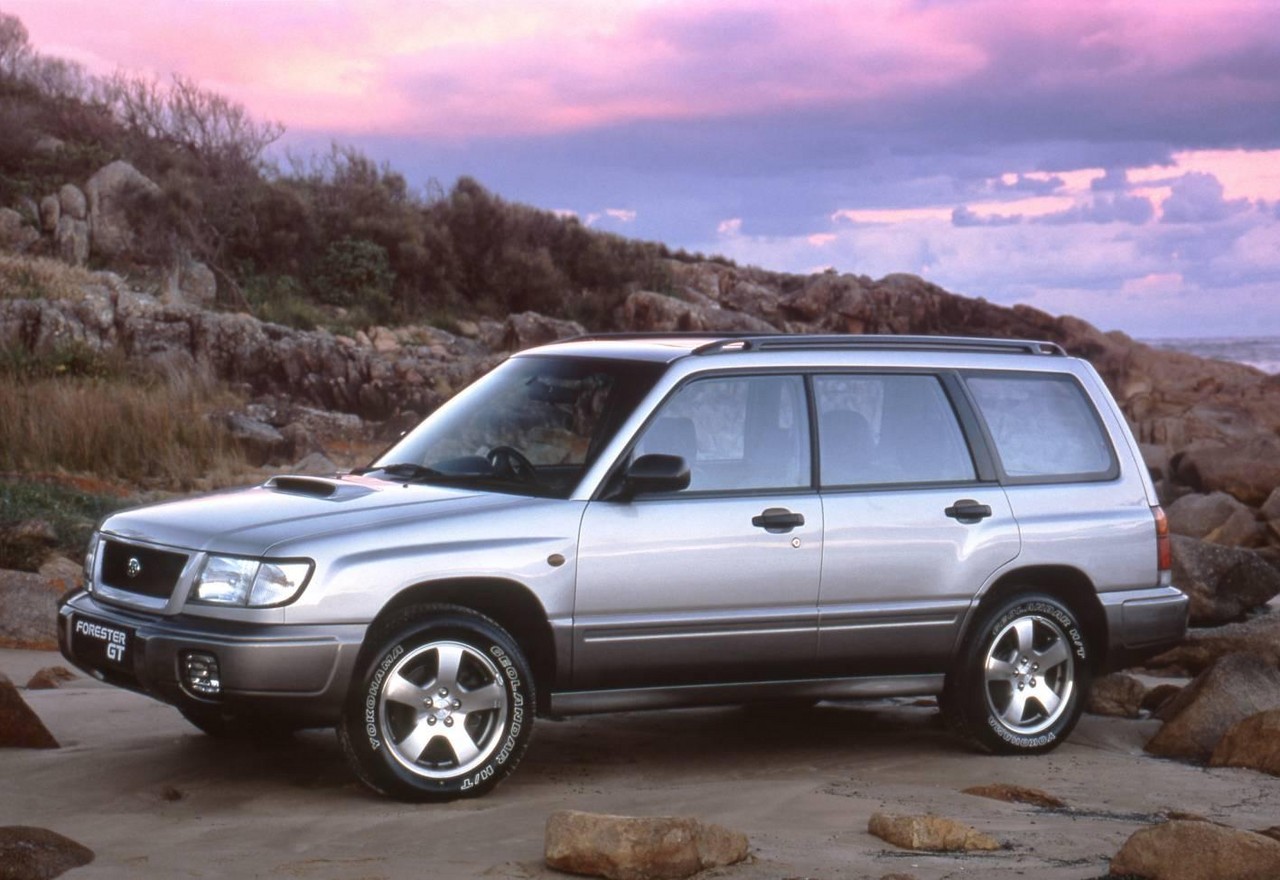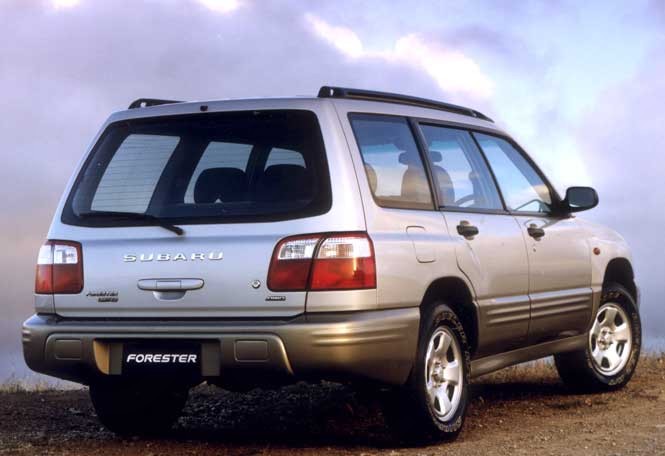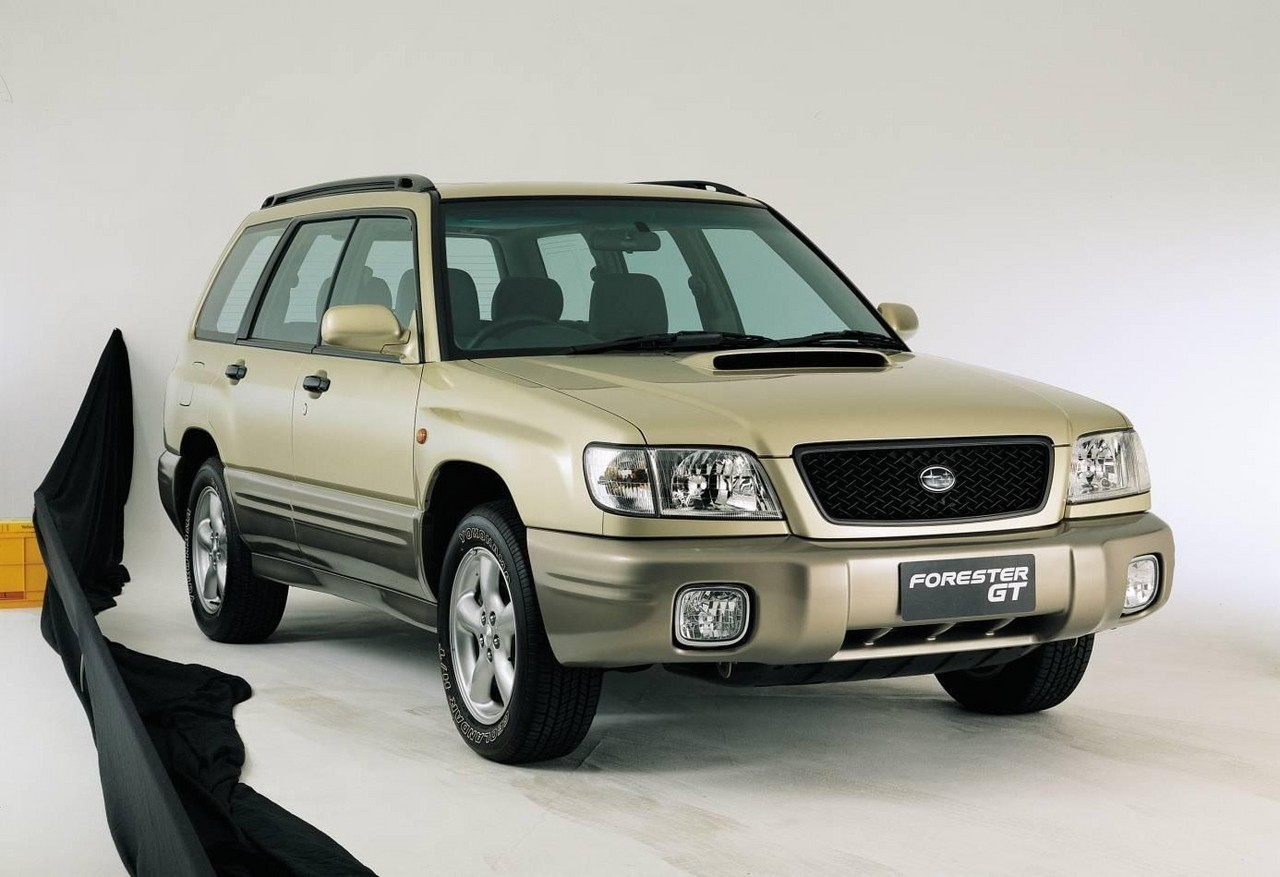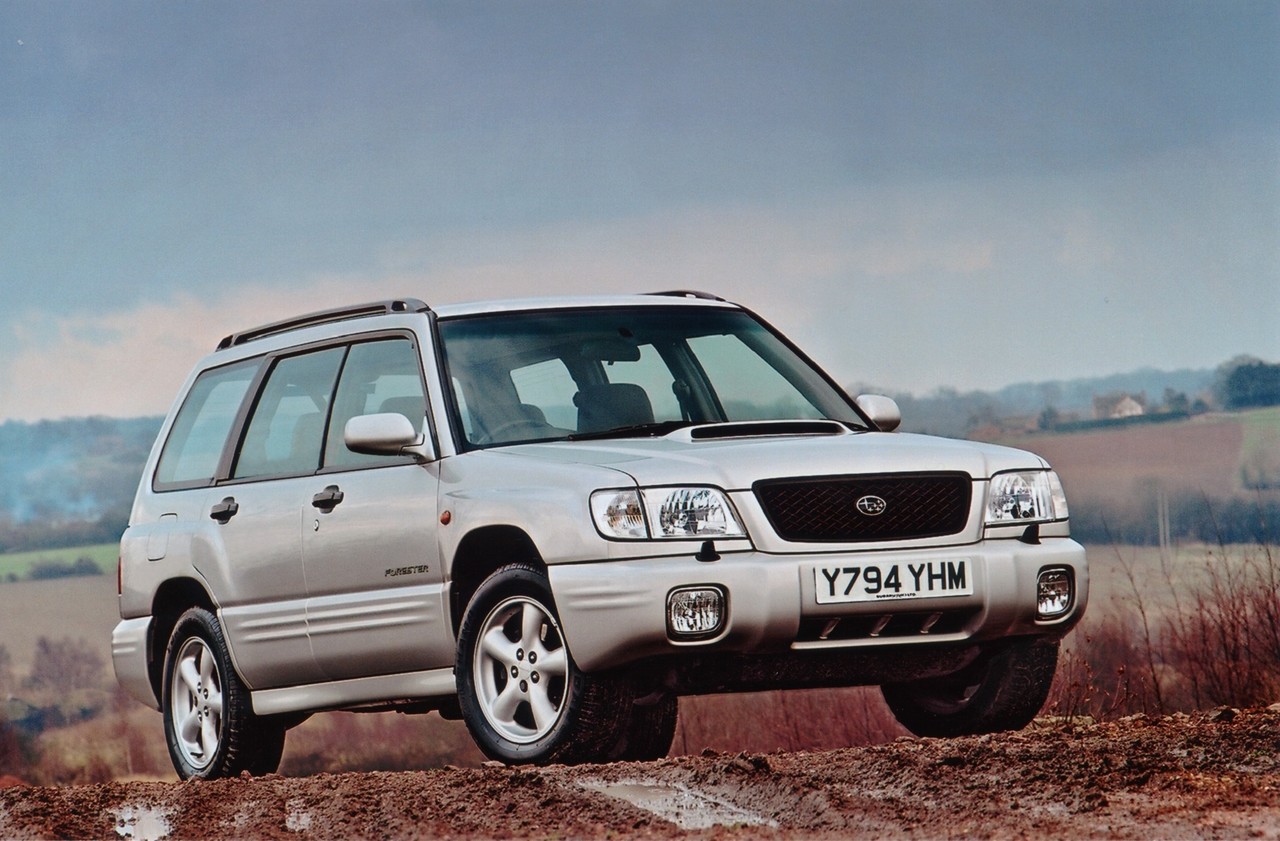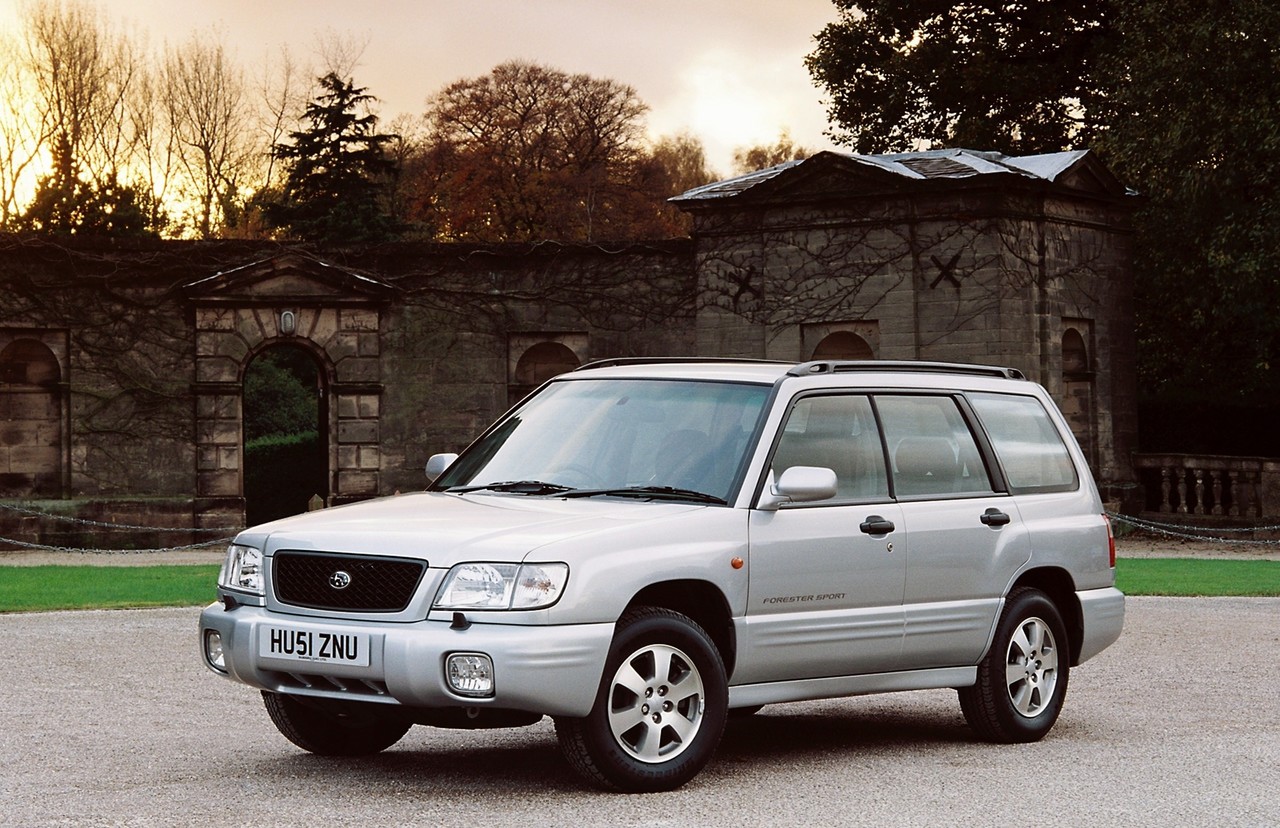
- Refined 2.0-litre petrol engine
- Forester GT has responsive 2.0-litre turbo petrol engine
- Dual range manual transmission provides off-road ability
- All-wheel drive traction (but two very different systems)
- Comfortable ride
- 2.0-litre petrol engine only adequate
- Indecisive automatic transmission
- Limited rear seat legroom
- Cheap interior carpets
Review: Subaru SF.I Forester (1997-98)
Overview
Released in August 1997, the Subaru SF Series I (SF.I) Forester was a mid-size, all-wheel drive wagon. Manufactured in Ota, Japan, the Subaru SF Forester was initially powered by a 2.0-litre horizontally opposed (or ‘boxer’) four-cylinder petrol engine; transmission options consisted of a four-speed automatic or five-speed, dual-range manual unit. Furthermore, the Forester range consisted of GX and Limited variants.
EJ20J engine
The 2.0-litre, horizontally-opposed EJ20J engine had an open-deck aluminium alloy cylinder block, a cross-flow aluminium alloy cylinder head, a single overhead camshaft per cylinder bank (belt-driven), four valves per cylinder and a compression ratio of 9.7:1.
Dimensions
Compared to the GM Impreza wagon on which it was based, the Subaru SF Forester was 100 mm longer (at 4450 mm), 1517 mm narrower (173 mm), 175 mm taller (1595 mm) and had a 5 mm longer wheelbase (2525 mm); ground clearance was also raised by 50 mm to 200 mm.
Suspension
The Subaru SF Forester had MacPherson strut front suspension with L-shaped transverse links and independent rear suspension with dual lateral links. Limited variants were also fitted with self-levelling rear suspension.
| Variant | Engine | Trans. | Peak power | Peak torque |
|---|---|---|---|---|
| GX, Limited |
2.0-litre EJ20J petrol F4 | 5sp man., 4sp auto |
90 kW at 5600 rpm | 176 Nm at 3600 rpm |
AWD systems
For Subaru SF Forester models with manual transmissions, the all-wheel drive system provided a 50:50 front/rear torque split. In the event that the wheels lost traction, the viscous coupling with the centre differential case would operate to direct up to 80 per cent of the engine’s torque to the opposing axle.
For Subaru SF Forester models with automatic transmissions, the all-wheel drive system provided an 80:20 front/rear torque split. Instead of a viscous coupling, this all-wheel drive system included an electronically-controlled, hydraulic multi-plate transfer clutch. Torque distribution to the rear axle could be varied according to wheel slippage, throttle position and braking. The driver could also engage a 50:50 front/rear torque distribution for standing starts by moving the gear lever from ‘D’ into ‘2’.
Safety equipment
The SF.I Forester GX was not fitted with safety equipment such as airbags. The Forester Limited, however, was fitted with dual front airbags and ABS.
Features: Forester GX and Limited
Standard features for the Subaru Forester GX included a four speaker sound system with a radio and cassette player, cruise control remote central locking, power windows and mirrors, a tilt adjustable steering wheel and roof racks.
The Forester Limited was further equipped with air conditioning.
Review: Subaru SF.II Forester (1998-99)
Overview
Released in August 1998, the Subaru SF Series II (SF.II) Forester introduced a more powerful 2.0-litre EJ201 engine , the turbocharged Forester GT and new automatic and manual transmissions.
EJ202 engine
The 2.0-litre EJ202 engine had an open-deck aluminium alloy cylinder block with cast iron liners, an aluminium alloy cylinder head with cross-flow cooling, a single overhead camshaft per cylinder bank (belt-driven), four valves per cylinder actuated by roller rocker arms, tumble swirl intake ports, multi-point sequential fuel injection and a compression ratio of 10.1:1.
Forester GT
The Forester GT was powered by Subaru’s EJ205 engine which had an open-deck die-cast aluminium block, a die-cast aluminium cylinder head, a Mitsubishi TD035 turbocharger, an air-cooled intercooler, double overhead camshafts per cylinder bank (belt-driven), four valves per cylinder and a compression ratio of 8.5:1.
Transmission options for the Forester GT were four-speed automatic and five-speed manual units; unlike the GX and Limited variants, however, the manual transmission for the GT was not dual-range.
| Variants | Engine | Trans. | Peak power | Peak torque |
|---|---|---|---|---|
| GX, Limited |
2.0-litre EJ202 petrol F4 | 5sp man., 4sp auto |
92 kW at 5600 rpm | 184 Nm at 3600 rpm |
| GT | 2.0-litre EJ205 turbo petrol F4 | 5sp man., 4sp auto |
125 kW at 5600 rpm | 240 Nm at 3200 rpm |
Safety equipment
Compared to their SF.I predecessors, standard safety equipment for the SF.II Forester was unchanged; the GT variant was similarly equipped to the Limited (i.e. dual front airbags and ABS).
Features: Forester GX, Limited and GT
Standard features for the Forester GX and Limited were extended to include cruise control and an immobiliser. Compared to the Limited, the GT omitted cruise control but was further equipped with 16-inch alloy wheels, velour trim, front fog lights and leather-wrapped steering wheel and hand brake knob.
1999 Forester Limited Special Edition
In March 1999, the Forester Limited Special Edition was released; it was distinguished by its 15-inch alloy wheels, front fog lights, leather-wrapped steering wheel, special mesh grille and a dark blue mica paint finish.
Review: Subaru SF.III Forester (2000-02)
Overview
Released in January 2000, the Subaru SF Series III (SF.III) Forester could be identified by its new nudge bar, grille, headlight assembly (with multi-reflector headlights), larger tail-lights and more rounded rear end. Inside, there were new seat fabrics and an improved instrument with twin trip meters and an outside temperature display. Furthermore, the suspension was revised for improved handling and a hill-holding function was introduced for the manual transmissions.
December 2000: EJ205 changes
In December 2000, a range of changes for the Forester GT’s EJ205 engine were introduced:
- To comply with Euro STEP3 emissions standards, a pre-catalytic converter was fitted between the exhaust port and the turbocharger;
- Equal length intake manifolds were introduced for more progressive on-boost performance
The intake ports were revised for greater efficiency; - Tumble Generator Valves (TGV) were introduced in the intake manifold to create a tumbling air motion for better air/fuel mixing and lower emissions on cold starts. At higher loads or when engine temperatures exceeded 63 degrees Celsius, the valve would open for greater air flow;
- The TD035 turbocharger had an increased diameter turbine housing inlet for improved exhaust glow;
- A four coil, direct ignition system was introduced; and,
- Engine diagnostics were upgraded to meet the European E-OBD standard.
| Variants | Engine | Trans. | Years | Peak power | Peak torque |
|---|---|---|---|---|---|
| GX, Limited |
2.0-litre EJ202 petrol F4 | 5sp man., 4sp auto |
2000-02 | 92 kW at 5600 rpm | 184 Nm at 3600 rpm |
| GT | 2.0-litre EJ205 turbo petrol F4 | 5sp man., 4sp auto |
2000 | 125 kW at 5600 rpm | 240 Nm at 3200 rpm |
| 2000-02 | 130 kW at 5600 rpm | 245 Nm at 4400 rpm |
Safety equipment
Compared to its SF.II predecessor, standard safety equipment for the SF.III Forester was extended to include dual front airbags and centre rear lap-sash seatbelt; GT variants were also fitted with front side airbags.
Features
Standard features for the SF.III Forester were largely unchanged, though the GT gained a CD player. From December 2000, the GT was fitted with a six-disc CD changer and cruise control.
From November 2001, the Forester was fitted with a CD player as standard (previously omitted from the GX and Limited variants).
2001 Forester Limited Special Edition
In January 2001, a Limited Special Edition model was released. Compared to the standard Limited variant, the Special Edition added 15-inch alloy wheels, a CD player, front fog lights and was available in black mica and royal silver metallic paint finishes. In February 2002, the Limited Special Edition returned with the same added features.
Related links
